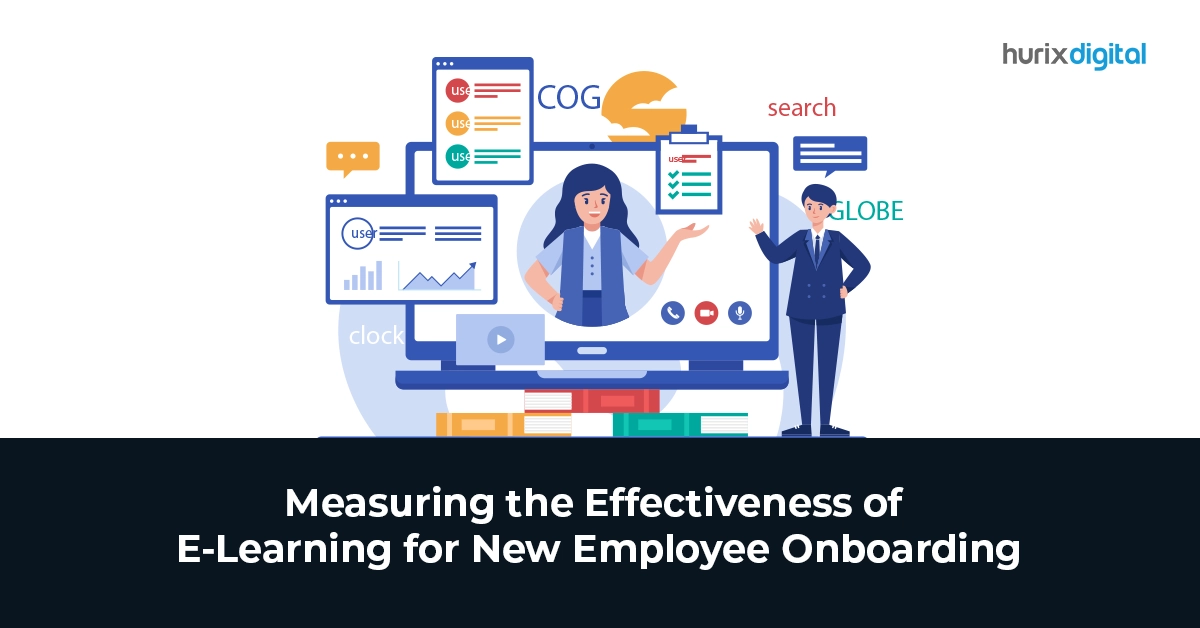Measuring Up: Gauging the Success of Your E-Learning Onboarding Program
Table of Contents:
- The Rise of E-Learning Onboarding: Why Companies Embrace It
- Online vs. Traditional Training: Weighing the Pros and Cons
- Ensuring Effectiveness: Best Practices for E-Learning Onboarding
- Best Examples of Onboarding Success Metrics
- Unlocking Success with Hurix Digital
The Rise of E-Learning Onboarding: Why Companies Embrace It
More and more companies are turning to e-learning solutions for new employees due to their numerous benefits:
- Scalability: Reach geographically dispersed teams efficiently and eliminate logistics hurdles.
- Flexibility: Offer self-paced learning that caters to diverse learning styles and schedules.
- Engagement: Interactive modules and gamification elements keep learners motivated and invested.
- Cost-effectiveness: Reduce training costs associated with travel, materials, and instructor time.
- Data-driven insights: Track progress, measure results, and adapt training based on data.
Online vs. Traditional Training: Weighing the Pros and Cons
While both online and traditional training methods have their merit, let’s compare them across key aspects:
| Feature | E-Learning Onboarding | Traditional Onboarding |
| Cost | Lower due to scalability | Higher due to logistics and instructor costs |
| Efficiency | Faster rollout, easily accessible | Can be time-consuming and location-dependent |
| Flexibility | Self-paced learning, caters to diverse needs | Fixed schedule, less adaptable |
| Engagement | Interactive elements, gamification | Can be passive, less engaging |
| Data-driven insights | Easier to track progress and measure impact | Limited data collection and analysis |
Ensuring Effectiveness: Best Practices for E-Learning Onboarding
To maximize the E-Learning Impact of your onboarding program, follow these key principles:
- Set clear learning objectives: Define what you want new hires to know and be able to do by the end of the program.
- Develop engaging content: Utilize interactive elements, storytelling, and multimedia to keep learners motivated.
- Measure progress and performance: Track key metrics and use data to identify areas for improvement.
- Seek feedback regularly: Gather feedback from new hires, managers, and trainers to refine the program.
- Provide support and resources: Offer readily available support and additional learning resources for new hires.
Best Examples of Onboarding Success Metrics
- Completion rates: Track the percentage of new hires who complete the entire program.
- Knowledge retention: Assess new hires’ understanding of key concepts through quizzes or tests.
- Time to productivity: Measure how long it takes new hires to reach their full potential.
- Engagement metrics: Analyze time spent on modules, interactions, and completion rates for individual modules.
- Employee satisfaction: Conduct surveys to gauge new hires’ satisfaction with the onboarding experience.
- Retention rates: Track how long new hires stay with the company after completing the program.
Unlocking Success with Hurix Digital
Hurix Digital is your partner in creating Onboarding Assessment strategies and Onboarding Evaluation tools to measure the true impact of your e-learning solutions on your new employee training. We offer expertise in developing effective Onboarding Success Metrics and crafting learning outcomes assessment methods to ensure your onboarding program delivers lasting results.
Contact us today to discuss your unique needs and embark on a journey of successful employee onboarding with the power of data-driven insights.

Performance, Results, Growth, and Life-Long Learning define my professional life. I am passionate about making workplace learning planful, purposeful, and impactful. I take pride in partnering with clients and bringing them the best in learning design and creating solutions that address business challenges.









